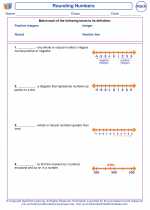Rounding Numbers Study Guide
What is Rounding?
Rounding is the process of approximating a number to a certain place value. This can make numbers easier to work with and understand in certain situations.
Rounding to the Nearest Tens
To round a number to the nearest tens place, look at the digit in the ones place. If it is 1-4, round down; if it is 5-9, round up. Replace the ones and all digits to the right with zeroes.
For example: 73 rounded to the nearest tens is 70, and 78 rounded to the nearest tens is 80.
Rounding to the Nearest Hundreds
To round a number to the nearest hundreds place, look at the digit in the tens place. If it is 1-4, round down; if it is 5-9, round up. Replace the tens and all digits to the right with zeroes.
For example: 743 rounded to the nearest hundreds is 700, and 789 rounded to the nearest hundreds is 800.
Rounding to the Nearest Thousands
To round a number to the nearest thousands place, look at the digit in the hundreds place. If it is 1-4, round down; if it is 5-9, round up. Replace the hundreds and all digits to the right with zeroes.
For example: 7,432 rounded to the nearest thousands is 7,000, and 7,889 rounded to the nearest thousands is 8,000.
Rounding Decimals
Rounding decimals follows the same principles as rounding whole numbers. Identify the place value to which you want to round and then determine if you need to round up or down based on the digit to the right of that place value.
For example: 3.45 rounded to the nearest tenth is 3.5, and 6.78 rounded to the nearest whole number is 7.
Summary
Rounding numbers helps simplify calculations and understand the approximate value of a number. It is important to understand the place value you are rounding to and the rules for rounding up or down based on the digit to the right of that place value.
.◂Math Worksheets and Study Guides Fourth Grade. Rounding Numbers
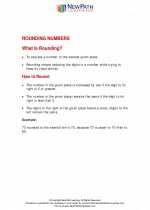
 Activity Lesson
Activity Lesson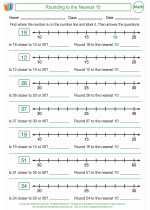
 Activity Lesson
Activity Lesson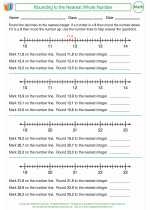
 Worksheet/Answer key
Worksheet/Answer key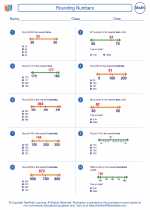
 Worksheet/Answer key
Worksheet/Answer key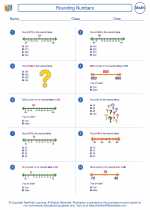
 Worksheet/Answer key
Worksheet/Answer key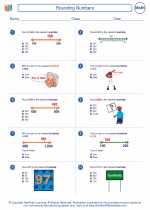
 Vocabulary/Answer key
Vocabulary/Answer key